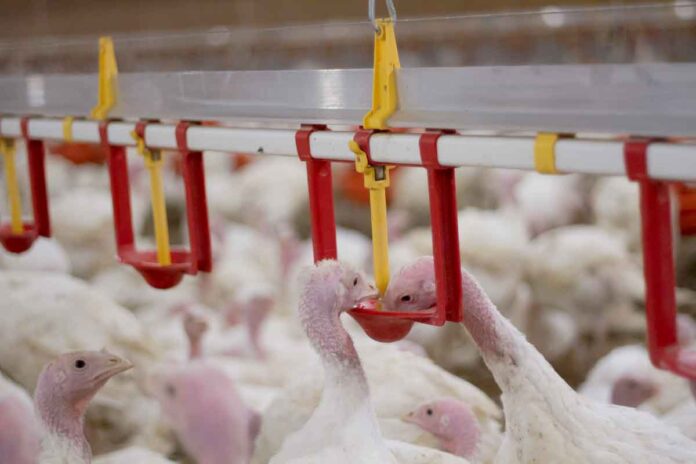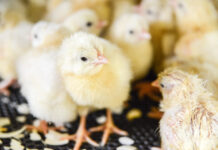
USPOULTRY and the USPOULTRY Foundation announced the completion of a funded research project at the University of Minnesota in which researchers investigated the characteristics of Turkey Hepatitis Reovirus (THRV). The research was made possible in part by an endowing Foundation gift from the Cooper Family Foundation and is part of the Association’s Comprehensive Research Program encompassing all phases of poultry and egg production and processing.
Dr. Rob Porter, a professor at the University of Minnesota along with colleagues, recently completed a research project investigating the characteristics of turkey hepatitis reovirus (THRV). The research was designed to answer the following questions: what the characteristics of this virus are; where it came from; how it is different from the other major reoviruses of poultry; and whether the reoviruses were widely distributed. Findings indicated that THRVs are probably variants of turkey arthritis reoviruses. THRV consistently induced tenosynovitis in inoculated poults.
Avian reoviruses (ARVs) are ubiquitous in domestic poultry with most of them being non-pathogenic. However, ARVs have also been associated with enteritis, hepatitis, neurological disease, myocarditis, respiratory disease and viral arthritis/tenosynovitis in chickens or turkeys. Clinical disease associated with ARV is mostly dependent on age of the affected host, host immune status, virus pathotype and route of exposure. Turkey reoviral arthritis is now recognized as a significant cause of lameness in U.S. turkeys and the associated reovirus is referred to as turkey arthritis reovirus (TARV). In 2019, poults began dying from an acute hepatitis and splenitis, and an ARV, termed “turkey hepatitis reovirus” (THRV), was consistently isolated from liver.
Learning from the experience of TARV, researchers knew it would be important to act quickly to understand the emerging virus so that proper prevention and control measures could be designed to help the turkey industry. An urgent need to answer basic questions about this virus included: what the characteristics of this virus are; where did it come from; how it is different from the other major reoviruses of poultry; and, whether or not the reoviruses were widely distributed. This completed research project addressed the following questions:
- is this THRV different from TARV and Turkey Enteritis Reovirus (TERV);
- are poults susceptible to oral challenge with THRV, and 3) do different THRVs differ in pathogenicity.
The specific aims of the study were to sequence the complete genome of a representative number of THRVs to determine space-time distribution of variant viruses, to determine genetic changes associated with tissue tropism of the emerging viruses, and to identify specific strains for pathogenicity study. Further, researchers endeavored to experimentally reproduce the disease to study its pathogenicity in turkey poults.
Upon completion of the research project, findings indicated that THRVs are probably variants of TARVs. THRV consistently induced tenosynovitis in inoculated poults. The effects were virtually identical to those caused by TARV, further supporting the sequencing evidence that THRVs are variants of TARVs. Real-time PCR results on viral load in different organs of birds in different groups at 14 dpi was lower as compared to viral load in different organs at 7 dpi. The viral load in liver, spleen and tendons was higher than other organs in birds from all the groups. No virus was detected in tissues of the negative control group.
Additionally, the segments encoding outer capsid proteins appear to be evolving/changing at a faster rate as compared to the segments encoding inner core proteins. Serotyping and sequence-based grouping indicate that four main serotypes of THRVs are circulating within the industry.
Source: www.uspoultry.org.
















